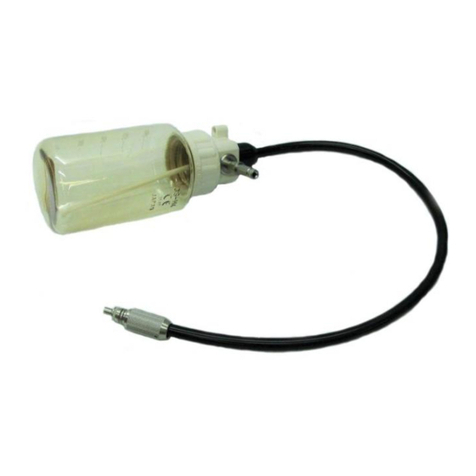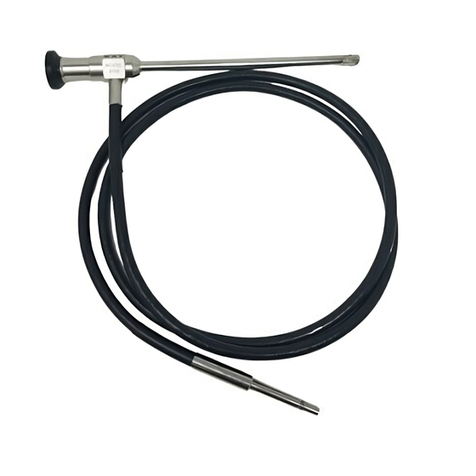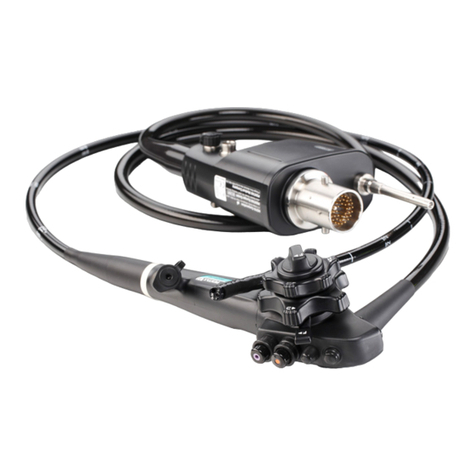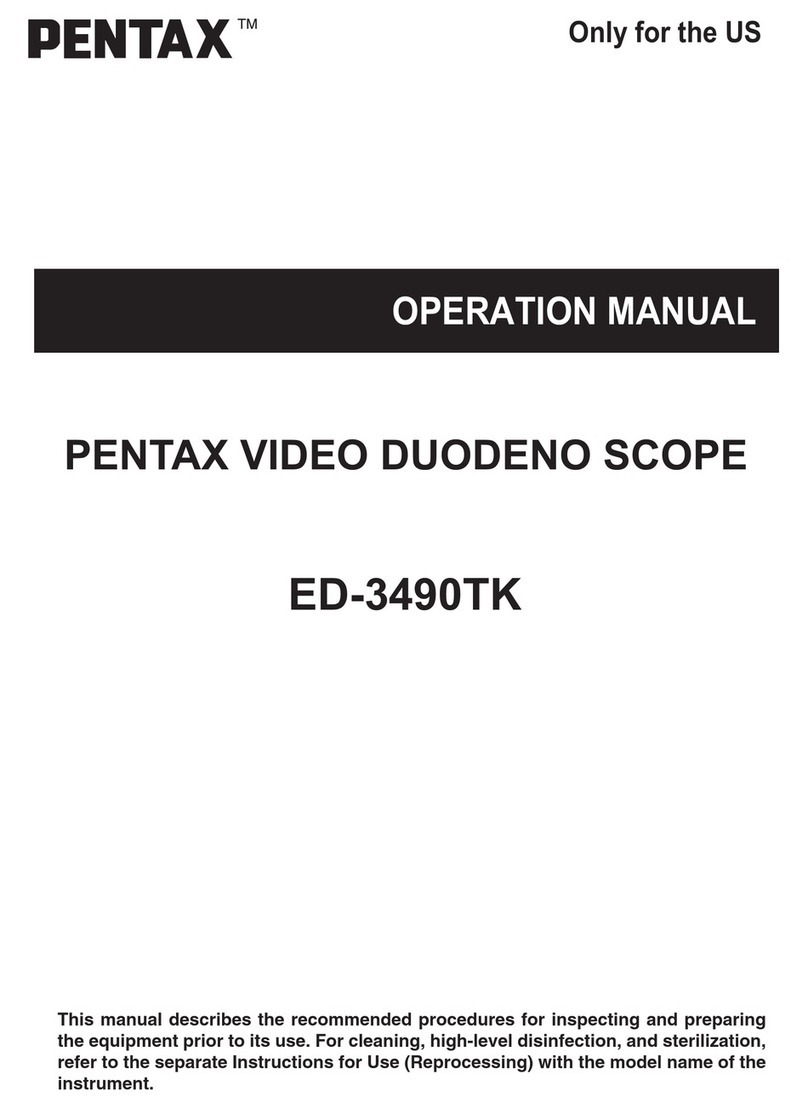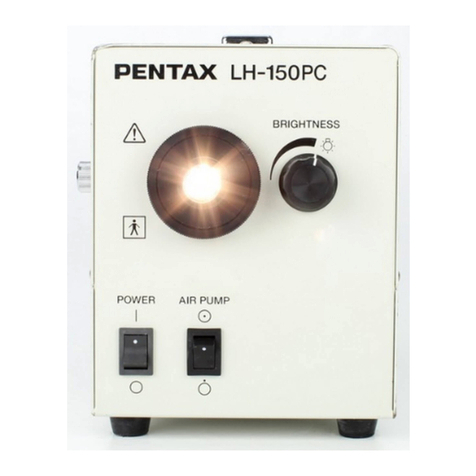Intended Use (Gastroscope)
These instruments are intended to provide optical visualization of (via a video monitor), and therapeutic access to, the Upper Gastrointestinal Tract.
This anatomy includes, but is not restricted to, the organs; tissues; and subsystems: Esophagus, Stomach, Duodenum and Small Bowel.
The instruments are introduced via the mouth when indications consistent with the need for the procedure are observed in adult and pediatric patient
populations.
Never use the endoscope for any purpose other than that for which it has been designed.
The video endoscopes contained in this manual can only be used with PENTAX video processor, model EPK-1000 and EPK-i.
Intended Use (Colonoscopes)
These instruments are intended to provide optical visualization of (via a video monitor), and therapeutic access to, the Lower Gastrointestinal Tract.
The This anatomy includes, but is not restricted to, the organs; tissues; and subsystems: Large Bowel to the Cecum.
These instruments are introduced via the rectum when indications consistent with the need for the procedure are observed in adult and pediatric patient
populations.
Never use these endoscopes for any purpose other than that for which they have been designed.
These video endoscopes contained in this manual can only be used with PENTAX video processors, model EPK-1000 and EPK-i.
Notes
Read this manual before operating, and save this book for future reference. Failure to read and thoroughly understand the information presented in this
manual, as well as those developed for ancillary endoscopic equipment and accessories, may result in serious injury including infection by cross
contamination to the patient and/or user. Furthermore, failure to follow the instructions in this manual may result in damage to, and/or malfunction of,
the equipment.
This manual describes the recommended procedures for inspecting and preparing the equipment prior to its use and for the reprocessing and
maintenance of the equipment after its use. It does not describe how an actual procedure is to be performed, nor does it attempt to teach the beginner
the proper technique or any medical aspects regarding the use of the equipment.
It is the responsibility of each medical facility to ensure that only well educated and appropriately trained personnel, who are competent and
knowledgeable about the endoscopic equipment, antimicrobial agents/processes and hospital infection control protocol be involved in the use and the
reprocessing of these medical devices. Known risks and/or potential injuries associated with flexible endoscopic procedures include, but are not limited
to, the following: perforation, infection, hemorrhage, burns and electric shock.
Current infection control guidelines require that G.I.scopes and other semi-critical medical devices, that normally come into contact with intact mucous
membranes, such as in the gastrointestinal tract, must at least be high-level disinfected before patient use. Only the user can determine if an instrument
has undergone appropriate infection control procedures prior to each clinical use. It must be recognized that infection control practices involve many
complex and often controversial issues which are constantly evolving. PENTAX strongly recommends that user remain informed of the latest federal
and local regulations, and encourages users to follow infection control guidelines developed by various organizations for health care professionals.
The text contained in this manual is common for various types/models of PENTAX endoscopes and users must carefully follow only those sections and
instructions pertaining to the specific instrument models appearing on the front cover.
If you have any questions regarding any of the information in this manual or concerns pertaining to the safety and/or use of this equipment, please
contact your local PENTAX representative.
Sterility Statement
The instruments identified in this instructional booklet are reusable medical devices. Since they are packaged non-sterile, they must be high-level
disinfected or sterilized BEFORE initial use. Prior to each subsequent procedure, they must be subjected to an appropriate cleaning and either high-
level disinfection or sterilization process.
Conventions
Throughout this manual, the following conventions will be used to indicate a potentially hazardous situation which, if not avoided;
: could result in death or serious injury.
: may result in minor or moderate injury or property-damage.
: may result in property-damage. Also, advises owner/operator about important information on the use of this equipment.
Prescription Statement
Federal (U.S.A) law restricts this device to sale by or on the order of a physician or other appropriately licensed medical professional.
EC REP
Symbol for “MANUFACTURER”
Symbol for “DATE OF MANUFACTURE”
Symbol for “AUTHORISED
REPRESENTATIVE”








